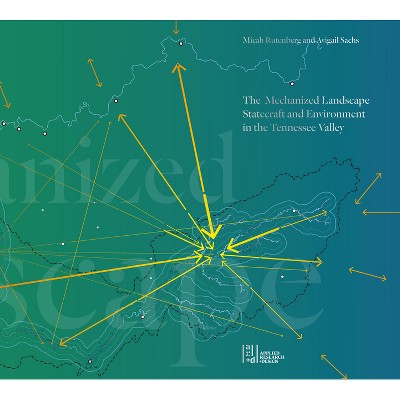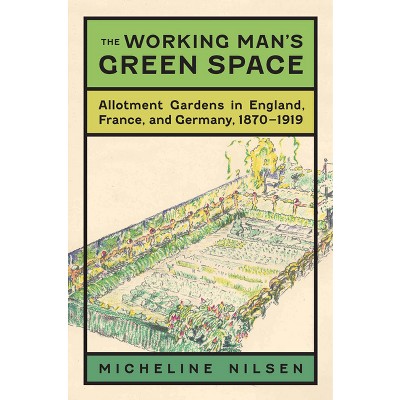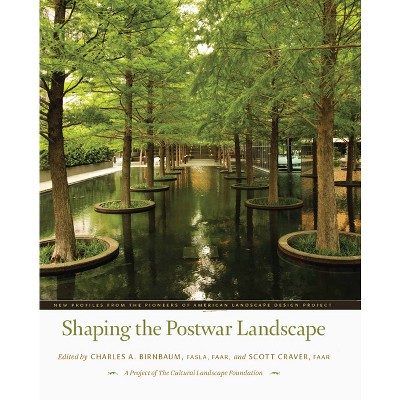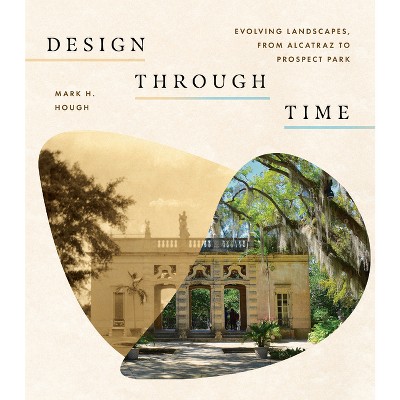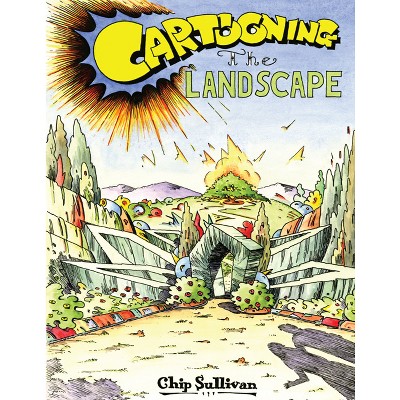The Garden in the Machine - (Midcentury) by Avigail Sachs (Paperback)

About this item
Highlights
- The Tennessee Valley Authority was the largest single agency created under the auspices of the New Deal legislation.
- About the Author: Avigail Sachs is Associate Professor of Architecture and Landscape History and Theory in the College of Architecture and Design at the University of Tennessee, Knoxville, and the author of Environmental Design: Architecture, Politics, and Science in Postwar America (Virginia).
- 300 Pages
- Architecture, Landscape
- Series Name: Midcentury
Description
About the Book
"The book examines how regional planners, landscape architects, and architects working for the Tennessee Valley Authority advocated and designed for humane environments, in which people could interact with each other and with nature. The TVA project can be seen as a microcosm of how American architecture and landscape were transformed in the context of the Great Depression and World War II"--Book Synopsis
The Tennessee Valley Authority was the largest single agency created under the auspices of the New Deal legislation. Until 1933, when the project was initiated, the Tennessee Valley was known romantically as "a region of untapped potential" and, less romantically, as one of the most impoverished and isolated areas of the country. The TVA was responsible for three large-scale environmental projects-the river, land, and power machines-but the project also had social, even utopian, goals. In service to the latter, the TVA put together a cadre of regional planners, architects, and landscape architects that Avigail Sachs calls the "atelier TVA." These professionals contributed to the design of the system of multipurpose dams, arranged visitor centers and scenic routes, built housing and communities (although both were segregated), and instigated a regional recreation industry. In addition to its planning and design history audience, this volume will be of interest to environmental historians and historians of the Progressive Era.
Publication of this volume was assisted by a grant from Furthermore: a program of the J. M. Kaplan Fund.
Review Quotes
In this clearly argued, well-organized, and impressively researched volume, Sachs cleverly and productively shifts our thinking on the TVA. She does not aim simply to recount the stories of well-known characters (such as TVA directors Arthur Morgan, Harcourt Morgan, and David Lilienthal) or of this or that dam and how the actions of the former and the realizations of the latter organically produced progressive outcomes for Tennessee River Valley residents. Rather, in six chapters Sachs homes in on a coterie of planners--architects, landscape architects, and other reformers--who, like the TVA's directors, saw social improvement not as a downstream consequence of infrastructure projects but as a core, and necessarily hard-earned, feature of the agency's mission. . . . In adding another important layer to our understanding of the early decades of the Tennessee Valley Authority, she has produced a volume that will be of interest to scholars of planning, architecture, and landscapes as well as to historians interested in the environment, technology, and the modern U.S. South.
--Journal of Planning HistoryThe Garden in the Machine promises to make a significant contribution to the scholarship of the Tennessee Valley Authority, particularly in terms of the landscape planning and the research agenda of the TVA 'atelier.'
--Christine Macy, Dalhousie University, author of DamsThis book offers an intriguing framework for considering the history of the design and construction of the TVA through the praxis of architects, planners, engineers, and landscape architects. But The Garden in the Machine is equally engaged in the actual material manifestations of the design and construction of the dam itself, the landscape of recreation, and the housing and residential development. Sachs successfully merges the two-a narrative that has not been fully developed elsewhere.
--Thaïsa Way, University of Washington, Author of Unbounded Practices: Women, Landscape Architecture, and Early Twentieth Century DesignSachs offers an overview of the Tennessee Valley Authority and the relationship between infrastructure, regional planning, and architecture in shaping a process of nation building. The Garden in the Machine provides a comprehensive narrative of the project that no other publication has achieved previously. The physical analysis of the dams and the housing types and their mobility in both space and culture, creates groundbreaking histories of this monumental control project. Sachs' work develops detailed narratives about social impacts of the development, including racial disparities and lived experiences of the changes wrought by this infrastructure. The river, land, and power machines, as Sachs delineates, have social goals along with their mechanistic rewiring of the movement of water and production of power. Readable and groundbreaking narratives of place. --On the Brinck Book Award Jury
About the Author
Avigail Sachs is Associate Professor of Architecture and Landscape History and Theory in the College of Architecture and Design at the University of Tennessee, Knoxville, and the author of Environmental Design: Architecture, Politics, and Science in Postwar America (Virginia).
